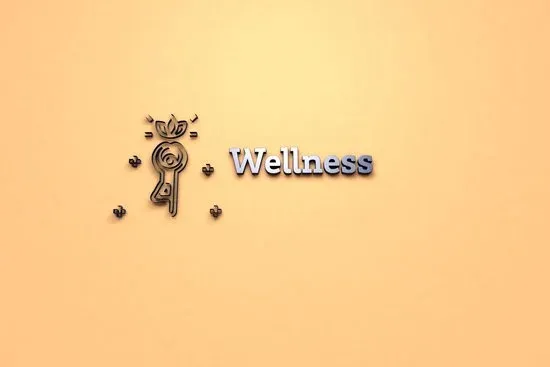In our fast-paced, constantly connected world, finding moments of genuine peace can feel nearly impossible. Your mind races from one thought to the next, worries pile up, and stress becomes your default state. But what if I told you there's a simple, scientifically proven practice that can transform your relationship with your thoughts, reduce stress, and bring lasting calm to your daily life?
That practice is mindfulness meditation, and it's more accessible than you might think. You don't need to be spiritual, flexible, or have hours of free time. You simply need a willingness to pause, breathe, and be present with yourself.
Understanding Mindfulness Meditation: More Than Just Sitting Still
Mindfulness meditation is the practice of purposefully focusing your attention on the present moment without judgment. Unlike concentration meditation, which focuses on a single point, mindfulness encourages open awareness of whatever arises in your experience—thoughts, sensations, emotions, sounds—while maintaining a stance of curious, non-reactive observation.
This ancient practice, rooted in Buddhist traditions, has been extensively studied by modern science and validated as a powerful tool for mental and emotional wellness. Research from institutions like Harvard Medical School demonstrates that regular meditation practice can literally change the structure and function of your brain, leading to improvements in attention, emotional regulation, and overall well-being.
The Science Behind the Serenity
When we talk about meditation's benefits, we're not discussing mystical effects—we're discussing measurable, neuroscientific changes. Studies using brain imaging technology have revealed fascinating transformations in the brains of regular meditators:
- Increased gray matter density in regions associated with learning, memory, and emotional regulation
- Reduced activity in the amygdala, the brain's "fear center" responsible for stress and anxiety responses
- Enhanced connectivity between brain regions involved in attention and executive function
- Thickening of the prefrontal cortex, associated with awareness, concentration, and decision-making
A landmark study published in the journal Psychiatry Research: Neuroimaging found that just eight weeks of mindfulness meditation practice produced measurable changes in brain regions associated with memory, sense of self, empathy, and stress. This isn't placebo effect—it's real, structural change happening in your brain.

Proven Benefits That Will Transform Your Life
The benefits of mindfulness meditation extend far beyond just feeling a bit calmer. Research has documented improvements across multiple dimensions of health and well-being:
Mental Health Benefits
- Significant reduction in symptoms of anxiety and depression
- Improved emotional regulation and resilience
- Enhanced ability to manage stress and recover from setbacks
- Decreased rumination and negative thought patterns
- Better sleep quality and reduced insomnia
Cognitive Benefits
- Improved focus and concentration
- Enhanced working memory capacity
- Better decision-making abilities
- Increased creativity and cognitive flexibility
- Slower age-related cognitive decline
Physical Health Benefits
- Lower blood pressure and heart rate
- Reduced chronic pain perception
- Improved immune function
- Better management of chronic conditions
- Reduced inflammation markers in the body
Getting Started: Your First Meditation Practice
The beauty of mindfulness meditation is its simplicity. You don't need special equipment, expensive classes, or hours of free time. Here's how to begin:
Step 1: Find Your Space
Choose a quiet location where you won't be disturbed for the duration of your practice. This could be a corner of your bedroom, a comfortable chair in your living room, or even a peaceful spot outdoors. The location matters less than the absence of distractions.
Step 2: Get Comfortable
You can sit on a cushion on the floor, in a chair with your feet flat on the ground, or even lie down (though lying down increases the chance you'll fall asleep). The key is finding a position you can maintain comfortably for several minutes. Keep your spine relatively straight but not rigid, allowing for natural curves.
Step 3: Set Your Timer
Start with just 5-10 minutes. Seriously. Many beginners make the mistake of attempting 30-minute sessions right away, leading to frustration and abandonment of the practice. Begin small and build gradually.
Step 4: Focus on Your Breath
Close your eyes or maintain a soft gaze downward. Bring your attention to the physical sensation of breathing. Notice the air entering your nostrils, the rise and fall of your chest and belly, the slight pause between breaths. Don't try to control your breathing—just observe it as it naturally occurs.
Step 5: Notice When Your Mind Wanders
Here's the most important part: your mind will wander. That's not failure—it's completely normal and expected. When you notice you've drifted into thinking (planning, remembering, worrying), simply acknowledge the thought without judgment and gently return your attention to your breath. This process of noticing and returning is the meditation practice itself.
Common Challenges and How to Overcome Them
| Challenge | Solution |
|---|---|
| "My mind won't stop thinking" | That's completely normal! The goal isn't to stop thoughts but to change your relationship with them. Each time you notice and return to your breath, you're succeeding. |
| "I don't have time" | Start with just 5 minutes. You have time for 5 minutes. As the practice becomes valuable to you, you'll naturally find more time for it. |
| "I feel restless and uncomfortable" | Physical discomfort is normal at first. Adjust your position as needed. Restlessness often decreases with regular practice as your nervous system learns to settle. |
| "I'm not doing it right" | If you're showing up and making the effort to be present, you're doing it right. There's no perfect meditation—only your meditation. |
| "I fall asleep" | Try meditating at a different time of day, sitting upright rather than lying down, or opening your eyes slightly to maintain alertness. |
Building a Sustainable Practice
The key to reaping meditation's benefits is consistency, not perfection. Here are strategies to help you maintain a regular practice:
Anchor Your Practice to an Existing Habit
Link meditation to something you already do daily. Meditate right after your morning coffee, before your shower, or immediately after you wake up. This habit stacking makes the practice automatic rather than requiring willpower.
Start Small and Build Gradually
Five minutes daily is infinitely better than 30 minutes once a week. Begin with a duration that feels completely doable, then increase by just a minute or two each week as you feel ready.
Track Your Practice
Keep a simple log of your meditation sessions. This creates accountability and allows you to see your progress over time, which can be motivating during challenging periods.
Be Compassionate With Yourself
You'll miss days. Your mind will feel especially busy sometimes. You might feel like you're not making progress. That's all part of the journey. The practice is to bring the same non-judgmental awareness you cultivate during meditation to your entire meditation journey.
Advanced Techniques to Deepen Your Practice
Once you've established a basic meditation routine, you might explore these variations to deepen your practice:
Body Scan Meditation
Systematically bring awareness to different parts of your body, from your toes to the crown of your head. This practice enhances body awareness and can be particularly helpful for releasing physical tension.
Loving-Kindness Meditation
Also called metta meditation, this practice involves directing feelings of warmth and care toward yourself and others. Research shows it increases positive emotions and social connection while reducing self-criticism.
Walking Meditation
Bring mindful awareness to the physical sensations of walking. This can be especially helpful for people who find sitting meditation challenging or who want to integrate mindfulness into daily activities.
Noting Practice
Gently label your experience as you meditate: "thinking," "feeling," "hearing," "planning." This creates a bit of distance from your mental activity and strengthens your observer perspective.

Integrating Mindfulness Into Daily Life
Formal meditation practice is valuable, but mindfulness becomes truly transformative when it extends into your everyday activities. Here's how to bring mindful awareness beyond your meditation cushion:
- Mindful eating: Pay full attention to the colors, smells, textures, and tastes of your food. Eat without distractions.
- Mindful walking: Notice the sensation of your feet touching the ground, the movement of your body through space.
- Mindful listening: Give your complete attention to others when they speak, without planning your response.
- Mindful pauses: Take three conscious breaths before transitioning between activities throughout your day.
- Mindful technology use: Notice your impulse to check your phone. Take a breath before opening social media.
"Mindfulness isn't difficult. We just need to remember to do it." — Sharon Salzberg, meditation teacher and author
What the Research Says: Real Data on Meditation's Impact
Let's look at some specific findings from recent research:
- A Johns Hopkins University study analyzing 47 meditation trials found that mindfulness meditation programs showed moderate evidence of improving anxiety, depression, and pain.
- Research from the University of California found that meditation training improved GRE reading comprehension scores and working memory capacity while reducing mind wandering.
- A study in the journal Brain, Behavior, and Immunity showed that eight weeks of mindfulness meditation reduced the inflammatory response to stress.
- Research published in JAMA Internal Medicine found mindfulness meditation helped reduce insomnia and improve sleep quality in older adults.
Creating Your Personal Meditation Plan
Here's a simple framework to establish your practice:
Week 1-2: Foundation Building
- Meditate for 5 minutes daily
- Same time and place each day
- Focus on breath awareness only
- Don't worry about "doing it right"
Week 3-4: Deepening Practice
- Increase to 7-10 minutes daily
- Experiment with different times of day
- Try a body scan meditation once or twice
- Journal about your experience
Week 5-8: Expanding Awareness
- Practice 10-15 minutes daily
- Incorporate informal mindfulness practices
- Explore guided meditations if desired
- Notice changes in your daily life
Beyond 8 Weeks: Sustainable Practice
- Maintain whatever duration feels sustainable
- Explore different meditation styles
- Consider joining a meditation group or class
- Continue deepening your practice at your own pace
When to Seek Additional Support
While meditation is generally safe and beneficial, some situations warrant additional professional guidance:
- If meditation brings up overwhelming emotions or traumatic memories, consider working with a therapist trained in mindfulness approaches
- If you have a history of psychiatric conditions, discuss meditation with your mental health provider
- If you find meditation consistently increases anxiety rather than decreasing it, explore different approaches or seek guidance from an experienced teacher
Remember that meditation is a complement to, not a replacement for, professional mental health care when needed.
Your Journey Begins Now
Starting a mindfulness meditation practice is one of the most valuable gifts you can give yourself. It costs nothing, requires minimal time, and offers benefits that extend into every area of your life. You don't need to be perfect at it—you just need to begin.
Take a moment right now. Close your eyes. Take three slow, deep breaths. Notice how you feel. That's meditation. That's the practice. And you've just started your journey.
As you develop your practice, remember that meditation is not about achieving a particular state or becoming a different person. It's about training in awareness and compassion, learning to be present with your life as it actually is. In a world that constantly pulls our attention away from the present moment, this simple practice of returning again and again to our immediate experience is revolutionary.
The benefits will come—more calm, better focus, emotional resilience, mental clarity. But they arrive not through striving for them, but through the gentle, patient practice of showing up, breathing, and being present with whatever arises.
References & Further Reading
- Harvard Health Publishing. (2021). "What meditation can do for your mind, mood, and health." Harvard Medical School
- American Psychological Association. (2012). "Mindfulness meditation: A research-proven way to reduce stress." APA
- Goyal, M., et al. (2014). "Meditation Programs for Psychological Stress and Well-being." JAMA Internal Medicine. NCBI
- Hölzel, B.K., et al. (2011). "Mindfulness practice leads to increases in regional brain gray matter density." Psychiatry Research: Neuroimaging. NCBI
- National Center for Complementary and Integrative Health. (2022). "Meditation: In Depth." NIH
Frequently Asked Questions About Mindfulness Meditation
Start with just 5-10 minutes daily. As a beginner, consistency matters more than duration. Many people find that beginning with shorter sessions helps build a sustainable habit. You can gradually increase to 15-20 minutes as meditation becomes more comfortable.
The best time is whenever you can be most consistent. Many people prefer morning meditation to set a positive tone for the day, while others find evening practice helps them unwind. Some practitioners meditate during lunch breaks. Experiment to find what works best for your schedule and energy levels.
Absolutely! Mind wandering is completely normal and happens to everyone, including experienced meditators. The practice isn't about stopping thoughts but noticing when your mind wanders and gently returning your attention to your breath or chosen focal point. Each time you redirect your attention, you're strengthening your mindfulness muscle.
No special equipment is required. All you need is a quiet space and a few minutes. While meditation apps, cushions, or guided recordings can be helpful tools, they're not necessary. You can practice mindfulness meditation anywhere, anytime, using only your breath and awareness.
Many people notice subtle benefits within the first week, such as feeling calmer or more present. Research shows that consistent practice for 8 weeks can lead to measurable changes in brain structure and function. However, everyone's experience is unique. The key is maintaining regular practice without fixating on results.


